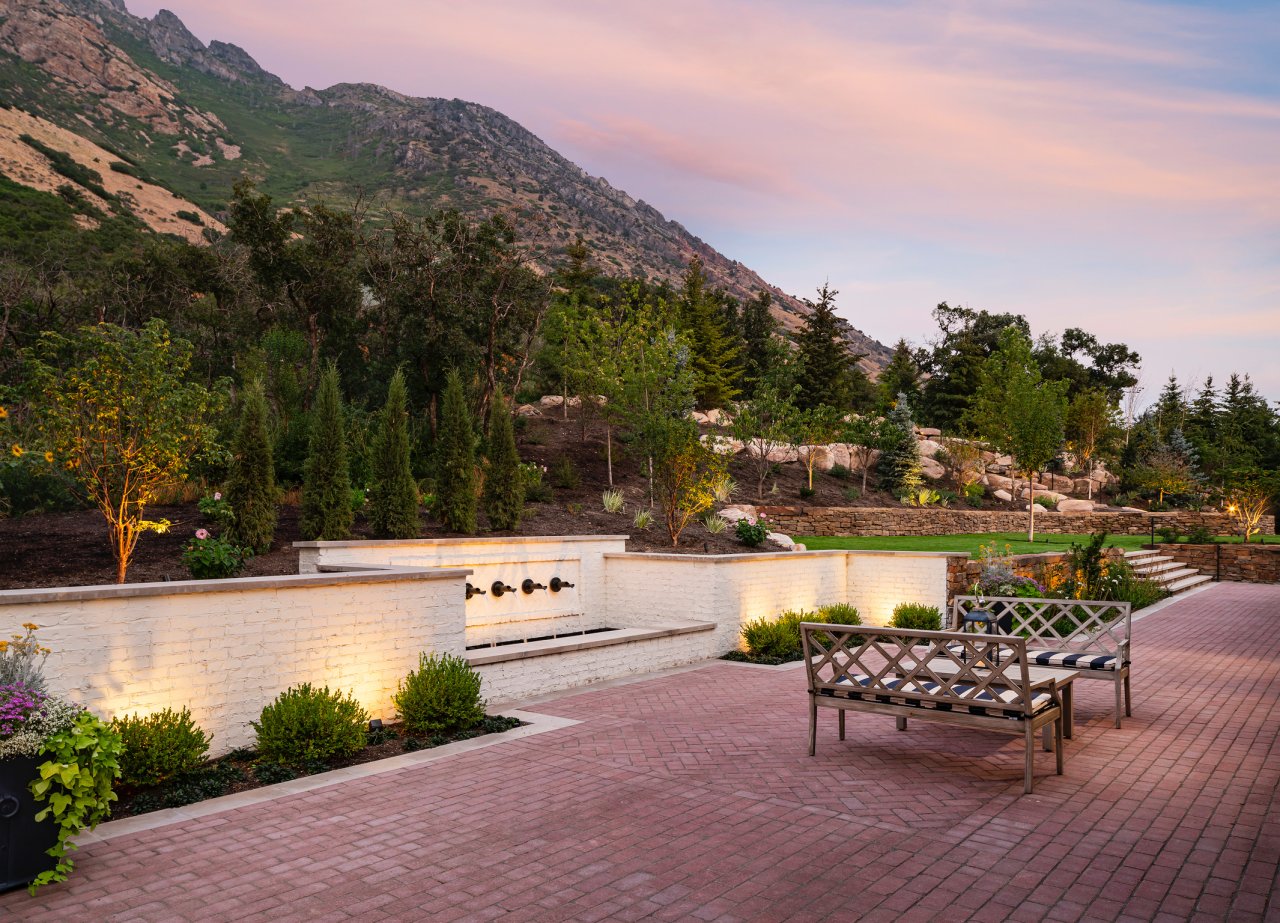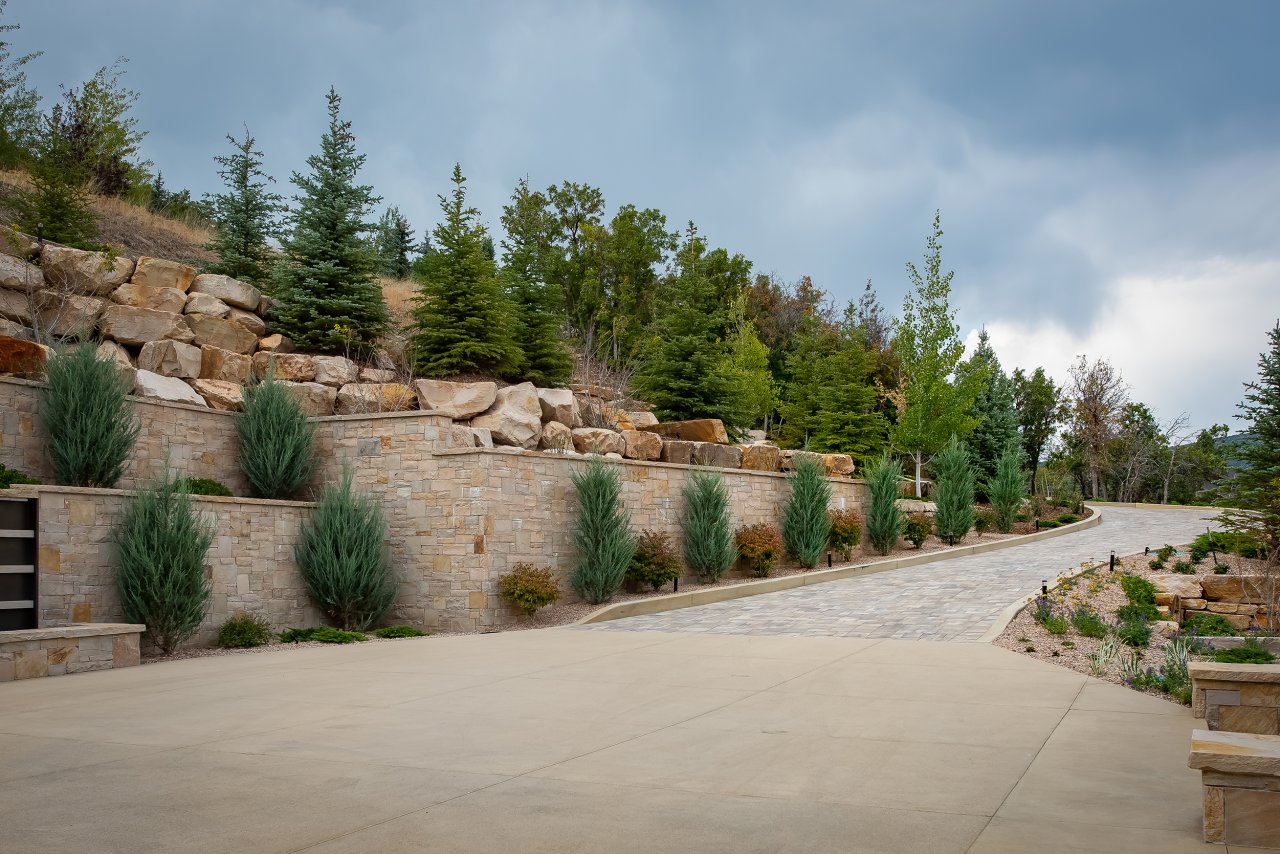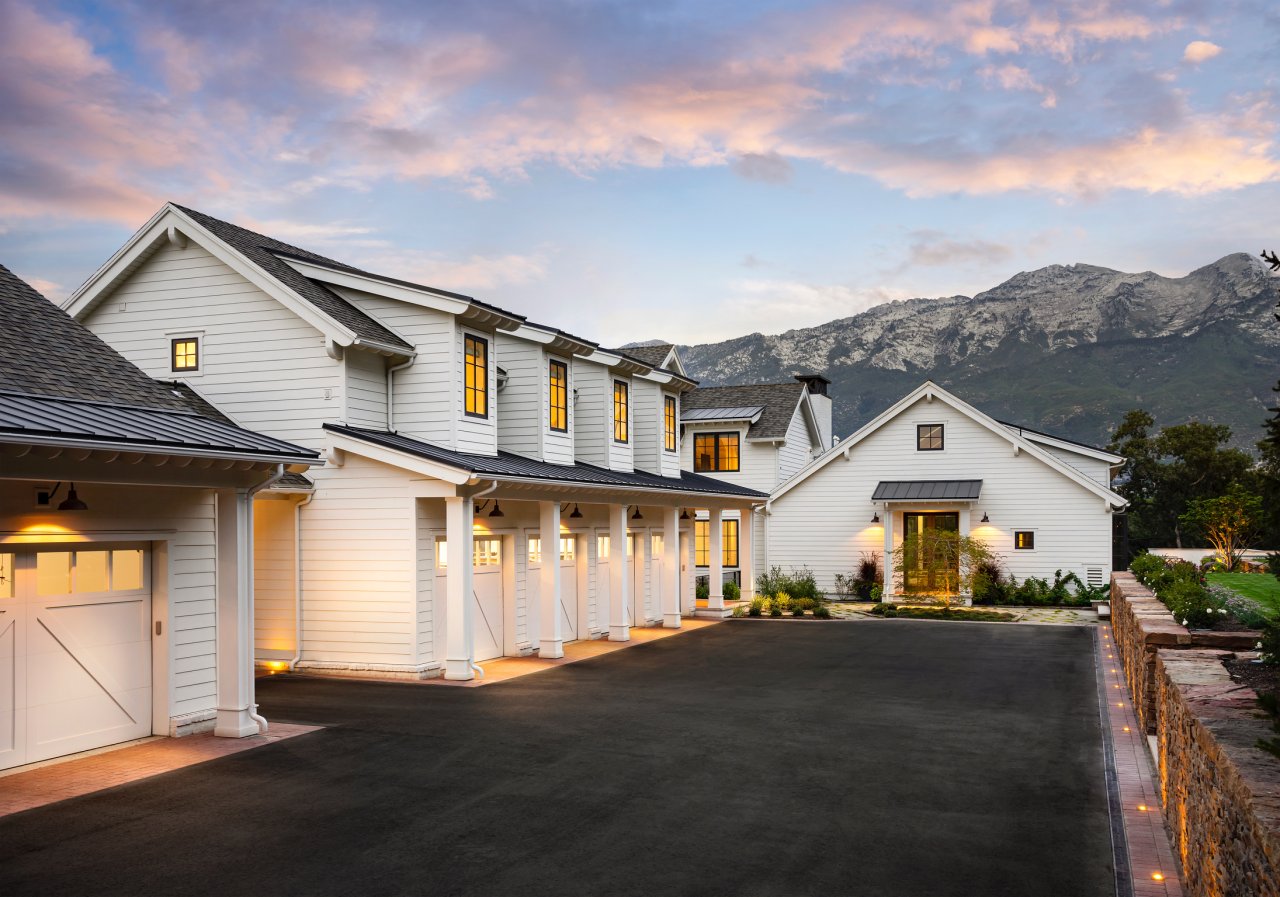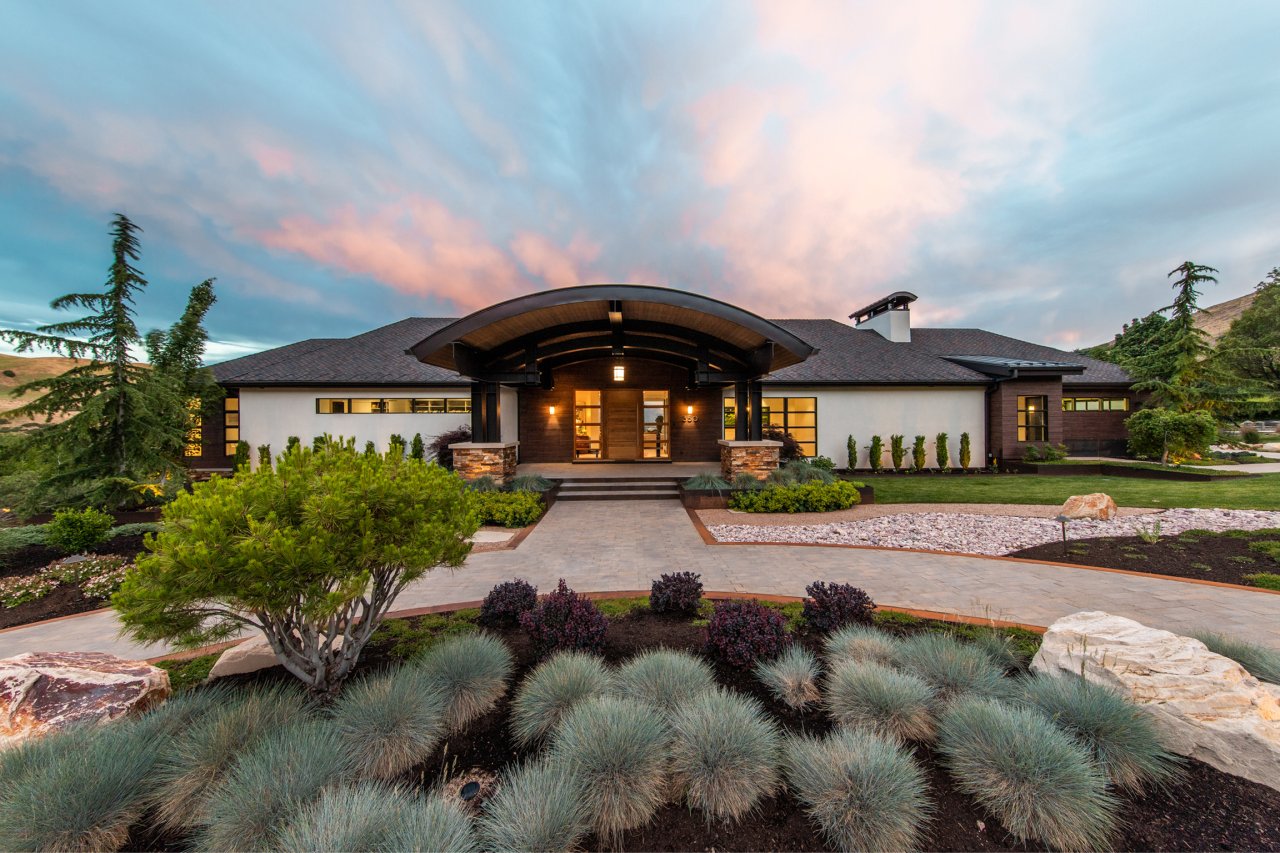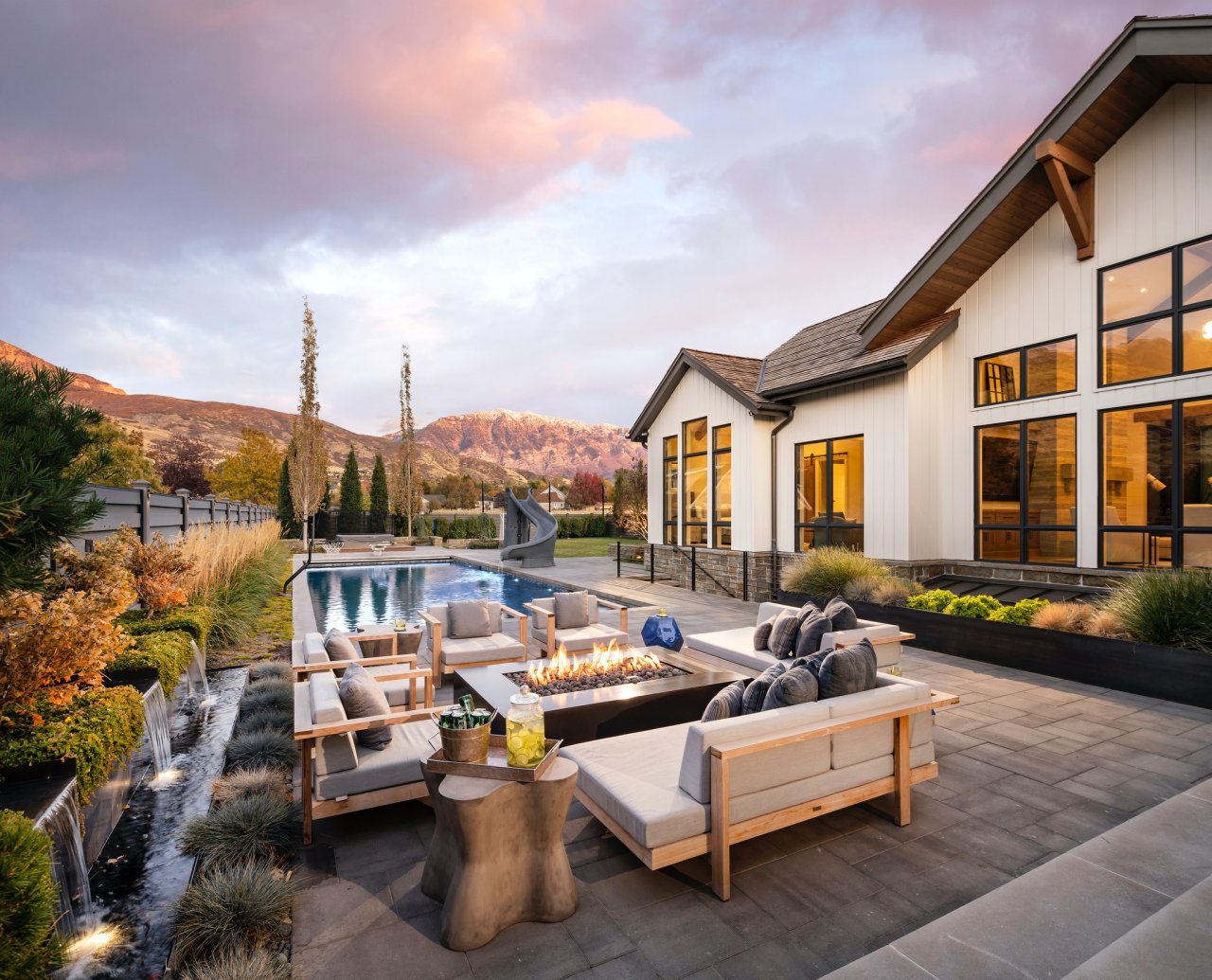DESIGN
Transform your landscape into a beautiful, functional outdoor living space
At Sunline, we’ve been designing, building and maintaining landscapes here among the mountains of Utah for over twenty years… and it’s been both a pleasure and a challenge. If you’re thinking of designing and building a landscape for your property, you might run into some of these challenges too… we’ve compiled some tips and recommendations to help make it easier, so read on!
When designing a landscape in a mountainous area, the most obvious challenge is the terrain itself. Many areas of Utah are characterized by rocky terrain and steep slopes, which can make excavation and installation of many landscape features challenging and expensive.
To make your landscape capable of supporting all the features you’d like to include, such as a pool, sports court or patio, you’ll need to level it off by incorporating retaining walls and terraces into your design. You also need to have a team who is familiar with working in these conditions — it’s not easy hauling equipment and materials up a mountainside!
While the terrain is a challenge when building your hardscapes, the wildlife adds its own set of challenges. If there are deer in your area, they won’t think twice about making a quick meal of your plants, so choose them carefully. While a hungry deer will eat just about anything, there are many that are deer-resistant — here are just a few:
Sagebrush is a hardy shrub with gray-green foliage that is highly resistant to deer browsing. Since it’s able to tolerate extreme temperatures, most soil conditions and lack of water, this Utah native is a good choice for most landscapes.
Indian ricegrass is a drought-tolerant grass with a distinctive seed head and can be used in landscaping as a ground cover or accent plant.
Gambel oak is a deciduous shrub or small tree native to Utah with distinctive lobed leaves. It can be used in landscaping as a shade tree or accent plant and is known for its glorious fall colors.
Utah is home to many other species of wildlife, including cougars, coyotes and bears. For the most part, they pose no real threat, so long as you are vigilant and aware of your surroundings. Here are some tips to make your property less attractive to these predators:
Trim bushes and shrubs around your property to reduce hiding places.
Install motion-sensitive landscape lighting to deter wildlife and make them easy to see at night.
Secure and dispose of garbage properly to avoid attracting bears, coyotes, raccoons and other wildlife.
Don’t hang bird feeders near your property or leave your pet’s food (or your pet) outside unattended.
Many people see landscape lighting as a frill designed to make your home look magical — but its real purpose is to keep you and your property safe and secure after the sun goes down.
Properties in the city enjoy the ambient light cast by street lamps and nearby buildings, but in the mountains, that isn’t the case. There’s no dark like country dark, so make sure your pathways and any areas you’ll need to access at night are adequately lit.
Landscape lighting will also keep animals away from your property at night since most nocturnal animals avoid areas that are brightly lit, and ones that do venture onto your property can easily be seen.
Utah is one of the driest states in the nation and its arid climate makes it difficult to maintain adequate water supply for landscaping.
To achieve a water-wise landscape — one that is functional, attractive, and easily maintained in its natural surroundings — it’s important to select a variety of drought-tolerant, native plant species and use an efficient irrigation system to minimize water usage.
Water scarcity is something that affects us all. At Sunline, we keep the issue of water conservation top of mind when designing landscapes for our clients, and you should too.
This is a challenge when designing any landscape, but it is a bit more complicated when you’re dealing with mountainous terrain. Choosing how you want your property to look, and which features will enhance your lifestyle, is something that requires a lot of thought.
Consider how you plan to use your space and who is going to be using it. Compile a wishlist of all the features that will bring you joy and help connect you to those you love. Often, it’s not easy envisioning how all these elements can come together to create a beautiful outdoor space — that’s why it’s so important to start with a good landscape design and work with a qualified landscape designer.
If you’re not sure where to begin, you can check out our featured projects for some inspiration.
Landscape design is full of challenges. Add mountains and the Great Salt Lake and it becomes even trickier. Now that we’ve shed some light on what those challenges are, you can start imagining all the possibilities for your landscape.
Fortunately, you don’t have to do it alone. Our team has been working in the mountainous regions of Utah and are skilled when it comes to designing and implementing landscaping projects, taking into account the unique challenges of the terrain, soil, water, weather, and environment.
If you’d like some help and guidance with your project, getting started is easy. Book a consultation and tell us about your project. We’d love to know more about you and your vision for your landscape and how we can help get you outside!
